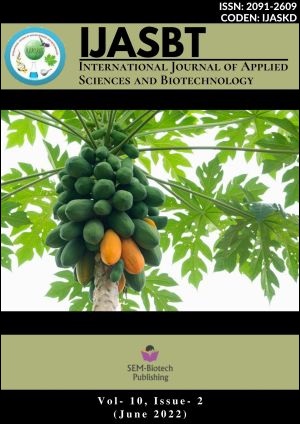Pesticide Persistence in Agriculture and its hazardous effects on Environmental Components
DOI:
https://doi.org/10.3126/ijasbt.v10i2.45095Abstract
Pesticides are applied to protect crops from insects, weeds, and bacterial or fungal diseases during the growth. There would be a 78 percent loss of fruit output, a 54 percent loss of vegetable production, and a 32 percent loss of cereal production if pesticides were not used. When pesticides are applied to a target plant, they have the potential to enter the environment where they can affect non target organisms. Concerns have also been raised about pesticide currently uses and its impact on the environment with the possibility for hazardous or carcinogenic residues. This review paper provides basic information about the general types of pesticide in use and the role of pesticides in agriculture with its impact in environmental components.
Int. J. Appl. Sci. Biotechnol. Vol 10(2): 75-83.
Downloads
Downloads
Published
How to Cite
Issue
Section
License
Copyright (c) 2022 International Journal of Applied Sciences and Biotechnology

This work is licensed under a Creative Commons Attribution-NonCommercial 4.0 International License.




